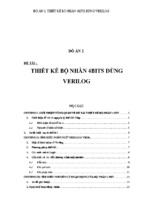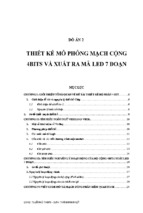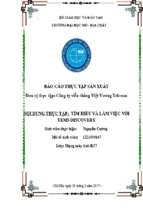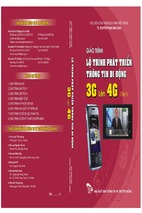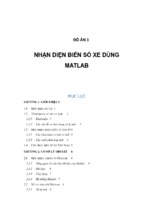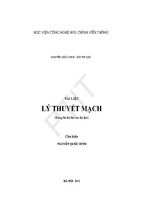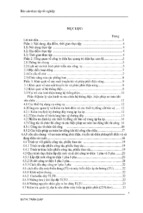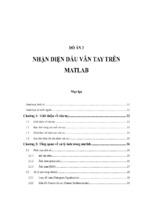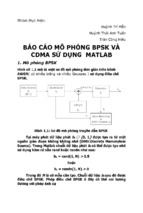262001
Mobile & Wireless Networking
Lecture 8:
Bluetooth & Zigbee
[Schiller, Section 7.5]
[Reader, Part 7]
[Optional: Wikipedia, “Bluetooth”]
Geert Heijenk
Mobile and Wireless Networking
2009 / 2010
Outline of Lecture 8
Bluetooth
General characteristics
Piconets & scatternets
Basic Access scheme
Baseband (MAC layer)
Higher layer protocols
Profiles and Versions
Zigbee
Zigbee vs. IEEE 802.15.4
Architecture & Topologies
IEEE 802.15.4 MAC layer
2
Mobile and Wireless Networking
2009 / 2010
Bluetooth
Idea
Universal radio interface for ad-hoc wireless connectivity
Interconnecting computer and peripherals, handheld devices,
PDAs, cell phones – replacement of IrDA
Embedded in other devices, goal: 5€/device
Short range (10 m), low power consumption, license-free 2.45 GHz
ISM
Voice and data transmission, approx. 1 Mbit/s gross data rate
One of the first modules (Ericsson).
3
Mobile and Wireless Networking
2009 / 2010
Bluetooth
History
1994: Ericsson (Mattison/Haartsen), “MC-link” project
Renaming of the project: Bluetooth according to Harald “Blåtand”
Gormsen [son of Gorm], King of Denmark in the 10th century
1998: foundation of Bluetooth SIG, www.bluetooth.org
2001: first consumer products for mass market, spec. version 1.1
released
2005: 5 million chips / week
Special Interest Group
Original founding members: Ericsson, Intel, IBM, Nokia, Toshiba
Added promoters: 3Com, Agere (was: Lucent), Microsoft, Motorola
> 10000 members
Common specification and certification of products
4
Mobile and Wireless Networking
2009 / 2010
Characteristics
2.4 GHz ISM band, 79 (23) RF channels, 1 MHz carrier spacing
Channel 0: 2402 MHz … channel 78: 2480 MHz
G-FSK modulation, 1-100 mW transmit power
FHSS and TDD
Frequency hopping with 1600 hops/s
Hopping sequence in a pseudo random fashion, determined by a
master
Time division duplex for send/receive separation
Voice link – SCO (Synchronous Connection Oriented)
FEC (forward error correction), no retransmission, 64 kbit/s duplex,
point-to-point, circuit switched
Data link – ACL (Asynchronous ConnectionLess)
Asynchronous, fast acknowledge, point-to-multipoint, up to 433.9
kbit/s symmetric or 723.2/57.6 kbit/s asymmetric, packet switched
Topology
Overlapping piconets (stars) forming a scatternet
5
Mobile and Wireless Networking
2009 / 2010
Piconet
Collection of devices connected in an ad
hoc fashion
One unit acts as master and the others
as slaves for the lifetime of the piconet
P
S
S
M
Master determines hopping pattern,
slaves have to synchronize
Each piconet has a unique hopping
pattern
Participation in a piconet =
synchronization to hopping sequence
Each piconet has one master and up to
7 simultaneous slaves (> 200 could be
parked)
P
SB
S
P
M=Master
S=Slave
SB
P=Parked
SB=Standby
6
Mobile and Wireless Networking
2009 / 2010
Forming a piconet
All devices in a piconet hop together
Master gives slaves its clock and device ID
Addressing
SB
SB
Hopping pattern: determined by device ID (48 bit, unique worldwide)
Phase in hopping pattern determined by clock
Active Member Address (AMA, 3 bit)
Parked Member Address (PMA, 8 bit)
SB
SB
SB
SB
SB
SB
S
SB
P
S
M
P
S
P
SB
SB
7
Mobile and Wireless Networking
2009 / 2010
Scatternet
Linking of multiple co-located piconets through the sharing of
common master or slave devices
Devices can be slave in one piconet and master of another
Communication between piconets
Devices jumping back and forth between the piconets
P
S
S
S
P
P
M
Piconets
(each with a
capacity of
< 1 Mbit/s)
M
SB
M=Master
S=Slave
P=Parked
SB=Standby
S
P
SB
SB
S
8
Mobile and Wireless Networking
2009 / 2010
Frequency hopping
78
Frequency
0
Time
9
Mobile and Wireless Networking
2009 / 2010
Bluetooth protocol stack
audio apps.
NW apps.
vCal/vCard
TCP/UDP
OBEX
telephony apps.
AT modem
commands
IP
BNEP PPP
mgmnt. apps.
TCS BIN
SDP
Control
RFCOMM (serial line interface)
Audio
Logical Link Control and Adaptation Protocol (L2CAP)
Link Manager
Host
Controller
Interface
Baseband
Radio
AT: attention sequence
OBEX: object exchange
TCS BIN: telephony control protocol specification – binary
BNEP: Bluetooth network encapsulation protocol
SDP: service discovery protocol
RFCOMM: radio frequency comm.
10
Mobile and Wireless Networking
2009 / 2010
Basic access scheme
79 hops (in Japan, Spain, and France 23) at a 1 Mhz spacing
dwel time of 625 µs
master determines the hopping sequence
TDD
f(k)
f(k+1)
f(k+2)
A
t
B
t
625 µs
11
Mobile and Wireless Networking
2009 / 2010
Frequency selection during data transmission
625 µs
fk
M
fk+1
fk+2
fk+3
fk+4
fk+5
fk+6
S
M
S
M
S
M
t
fk
fk+3
fk+4
fk+5
fk+6
M
S
M
S
M
t
fk
fk+1
M
S
fk+6
M
t
12
Mobile and Wireless Networking
2009 / 2010
Baseband
Piconet/channel definition
Low-level packet definition
Access code
Channel, device access, e.g., derived from master
Packet header
1/3-FEC, active member address (broadcast + 7 slaves), link type,
alternating bit ARQ/SEQ, checksum
68(72)
54
0-2745
access code packet header
4
preamble
64
(4)
3
sync. (trailer) AM address
bits
payload
4
1
1
1
8
type
flow
ARQN
SEQN
HEC
bits
13
Mobile and Wireless Networking
2009 / 2010
Baseband data rates
ACL
1 slot
3 slot
5 slot
SCO
Type
Payload User
Header Payload
[byte]
[byte]
FEC
CRC
Symmetric Asymmetric
max. Rate max. Rate [kbit/s]
[kbit/s]
Forward
Reverse
DM1
1
0-17
2/3
yes
108.8
108.8
108.8
DH1
1
0-27
no
yes
172.8
172.8
172.8
DM3
2
0-121
2/3
yes
258.1
387.2
54.4
DH3
2
0-183
no
yes
390.4
585.6
86.4
DM5
2
0-224
2/3
yes
286.7
477.8
36.3
DH5
2
0-339
no
yes
433.9
723.2
57.6
AUX1
1
0-29
no
no
185.6
185.6
185.6
HV1
na
10
1/3
no
64.0
HV2
na
20
2/3
no
64.0
HV3
na
30
no
no
64.0
DV
1D
10+(0-9) D 2/3 D yes D
64.0+57.6 D
Data Medium/High rate, High-quality Voice, Data and Voice
14
Mobile and Wireless Networking
2009 / 2010
SCO payload types
payload (30)
HV1
audio (10)
HV2
audio (20)
HV3
DV
FEC (20)
FEC (10)
audio (30)
audio (10)
header (1)
payload (0-9)
2/3 FEC
CRC (2)
(bytes)
15
Mobile and Wireless Networking
2009 / 2010
ACL Payload types
payload (0-343)
header (1/2)
DM1 header (1)
DH1 header (1)
DM3
header (2)
DH3
header (2)
DM5
header (2)
DH5
header (2)
AUX1 header (1)
payload (0-339)
payload (0-17)
2/3 FEC
payload (0-27)
payload (0-121)
CRC (2)
CRC (2)
(bytes)
CRC (2)
2/3 FEC
payload (0-183)
payload (0-224)
payload (0-339)
CRC (2)
CRC (2)
2/3 FEC
CRC (2)
CRC (2)
payload (0-29)
16
Mobile and Wireless Networking
2009 / 2010
Baseband link types
Polling-based TDD packet transmission
SCO (Synchronous Connection Oriented) – Voice
625µs slots, master polls slaves
Periodic single slot packet assignment, 64 kbit/s full-duplex, point-to-point
ACL (Asynchronous ConnectionLess) – Data
MASTER
SLAVE 1
SLAVE 2
Variable packet size (1,3,5 slots), asymmetric bandwidth, point-to-multipoint
SCO
f0
ACL
f4
SCO
f6
f1
ACL
f8
f7
SCO
f12
f9
ACL
f14
SCO
f18
f13
f19
f17
f5
ACL
f20
f21
17
Mobile and Wireless Networking
2009 / 2010
Robustness
Slow frequency hopping with hopping patterns determined by a master
Retransmission
SLAVE 1
Error in payload
(not header!)
ACL only, very fast
Forward Error Correction
MASTER
Protection from interference on certain frequencies
Separation from other piconets (FH-CDMA)
SCO and ACL
A
NAK
C
B
C
D
F
ACK
H
E
SLAVE 2
G
G
18
Mobile and Wireless Networking
2009 / 2010
Link manager protocol
Authentication, pairing and encryption
Synchronization
Capability negotiation
Quality of service negotiation
Power control
State and transmission mode change
19
Mobile and Wireless Networking
2009 / 2010
Baseband states of a Bluetooth device
unconnected
standby
detach
inquiry
page
transmit
AMA
park
PMA
connected
AMA
hold
AMA
Standby: do nothing
Inquire: search for other devices
Page: connect to a specific device
Connected: participate in a piconet
sniff
AMA
connecting
active
low power
Park: release AMA, get PMA
Sniff: listen periodically, not each slot
Hold: stop ACL, SCO still possible, possibly
participate in another piconet
20
Mobile and Wireless Networking
2009 / 2010
- Xem thêm -

